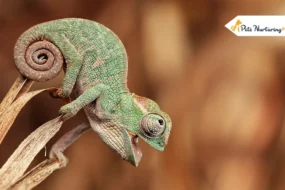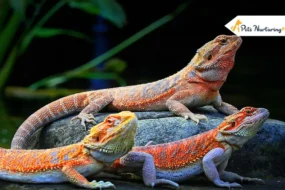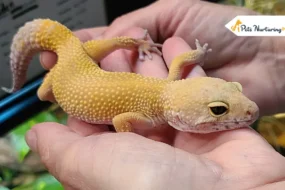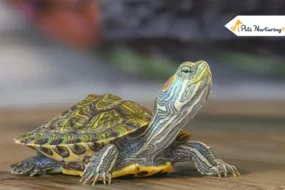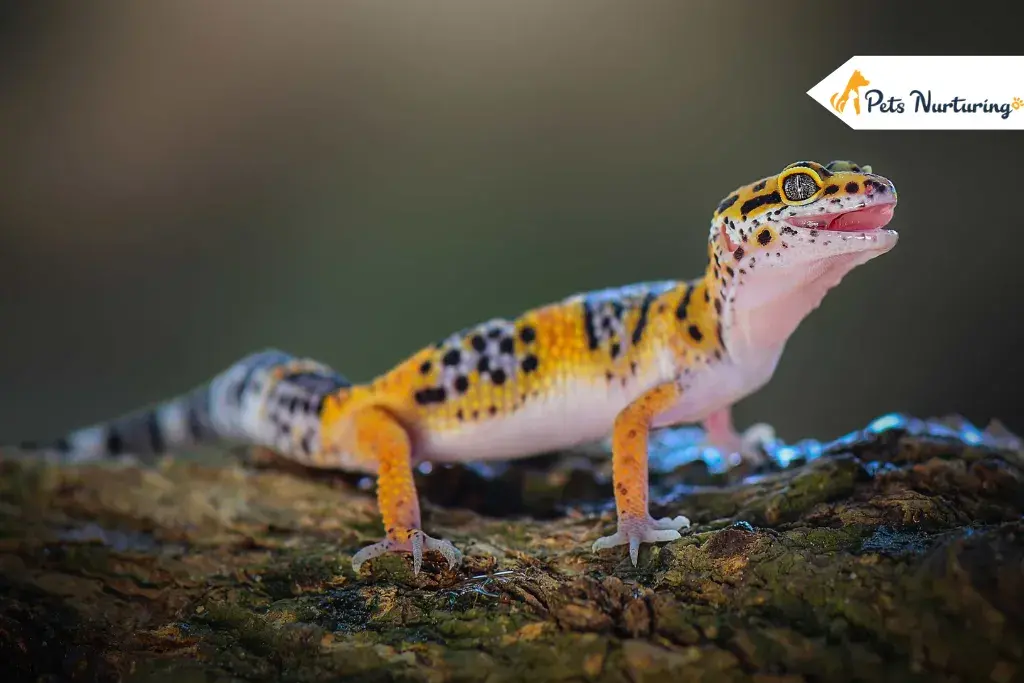
Who keeps a gecko? This might be an instant question after reading gecko as a pet. Believe us or not, they can be turned into the most amazing pet one could dream off. They are beautiful, able to change color, talkative in nature, eye-licking habit and have adhesive toe pads, live a long life than a cat or dogs, and most importantly they are a pleasure to keep. What more can you ask for while deciding which type of pet to bring home? Let’s see types of Geckos.
Types of Gecko
1. Leopard Gecko
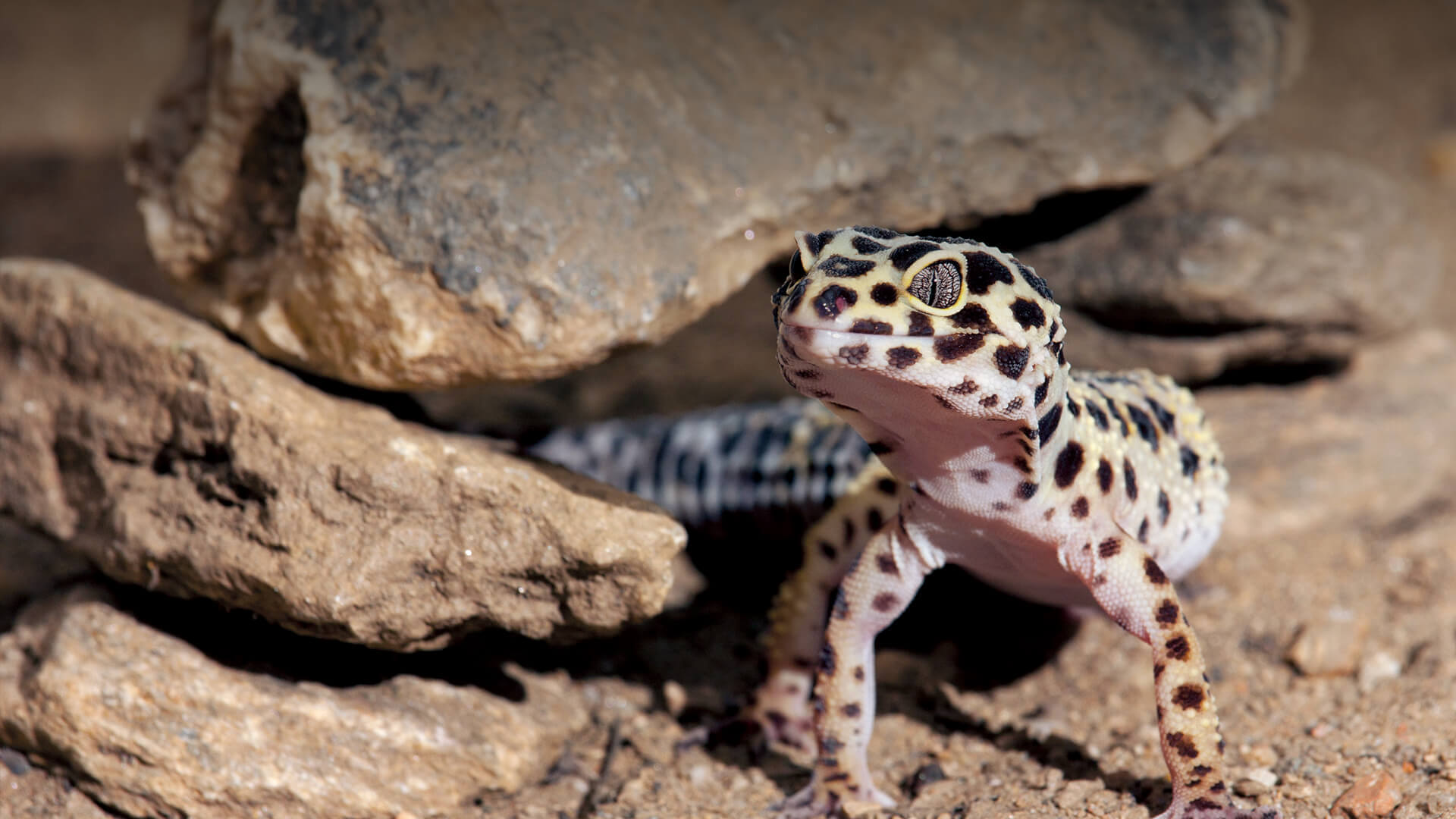
| Common Name | Leopard gecko |
| Scientific Name | Eublepharis macularius |
| Adult Size | 10 inch |
| Life Expectancy | 15 to 30 years |
Let’s start the list with the easiest gecko i.e. Leopard gecko. They are the ideal choice for the beginner because they demand less maintenance, obedient, easy to tame, do not have sticky toe-pads like others but yes, they have eyelids(aww…those long eyelids). They are slow movers and not prone to biting and yes master of perky behavior. When they feel the threat, they will self-amputate their tail as a sign of defense mechanism.
If you are planning to house it in a tank, make sure it should be between 15 to 20-gallon tank along with that only one male per tank to avoid the fight. You can use the old and empty fish tank as their house along with the regular white light incandescent heat bulb during the day and ceramic heat emitter bulb during the night.
Temperature
Generally, they don’t a humid environment but humidity below 20 percent leads to shedding trouble. An ideal temperature would be 31 C and between 21 C to 24 C at night.
Food and Water
One should provide a shallow plate of water all the time in the tank and make sure to before 24 hours of feeding, insects must be gut loaded. Their menu should include waxworms, crickets, pinkie mice for an adult, and waxworms.
Health Problems
Just like humans, if they don’t get sufficient calcium and vitamin D, limb deformities, painful spine and sometimes they can feel a loss of appetite and tremors. Leopard geckos are prone to infectious diarrhea from several bacterias, due to insufficient moisture they might develop the problem of dysecdysis.
2. Tokay Gecko
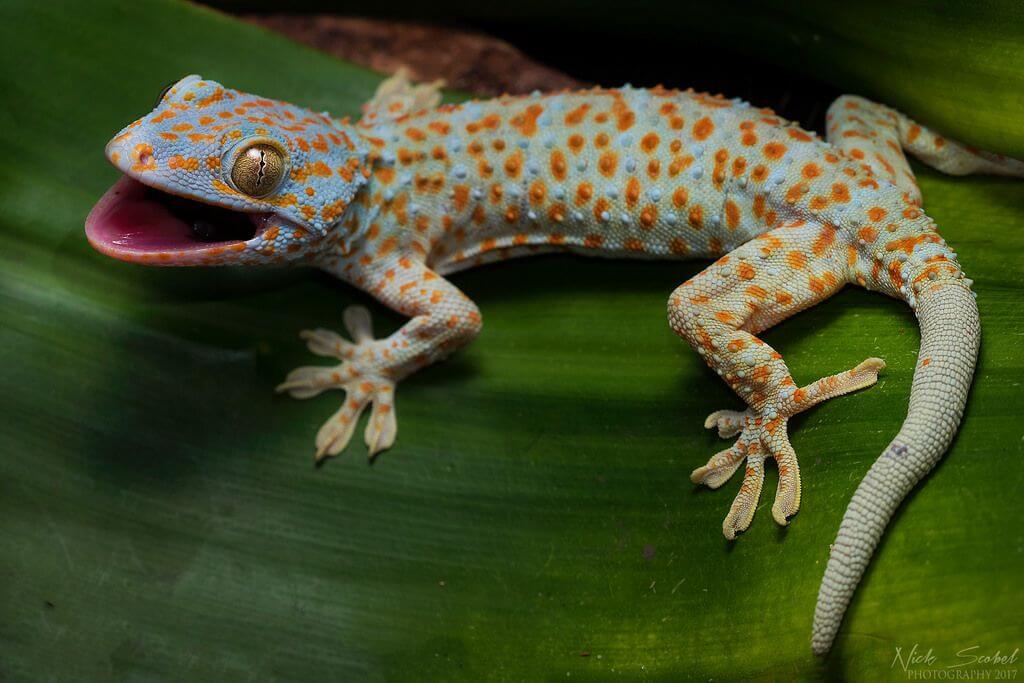
| Common Name | Tokay geckos |
| Scientific Name | Gekko gecko |
| Adult Size | 20 inches |
| Life Expectancy | Average 10 years which can be extended to 20 years |
Tokay Geckos are the second largest kind of geckos and are vibrant in colors and spots. You can find them in blue-gray color with the blue and orange spots. Just like leopard gecko, they are vocal in attracting mates by making noises and some belief that their noises bring good charm or good luck and that is the reason Asian people prefer them as a pet. They have a great reputation for biting and it can be very painful. They are night owl as they love to sleep during the day and make moves during the night.
We would recommend a minimum of 20 gallon-tank with the strong potted plants and sturdy branches to climb. Make sure to add half logs, cork bark, and branches as their hiding spots. Make sure to cover the tank as they can escape and years of captivity may provoke aggressive behavior.
Temperature
The ideal temperature at the night is between 21 to 27 C and during the day it would be 27 to 32 C. Make sure not to drop humidity below 50 percent.
Food and Water
They can eat anything as they are voracious eaters and you can feed them with waxworms, crickets, super worms, grasshoppers, cockroaches, mealworms, and pinky mice. You can allow calcium supplements if they are not getting the proper calcium. Make sure to feed juveniles every day and an adult every alternate day.
Health Problems
They are prone to mouth rot, excessive saliva, change in appetite, unusual fecal deposits, skin infection, respiratory infection, and difficulty in shedding. Don’t attempt to try any home remedy to treat their problem as a veterinarian can be the right person to treat.
Fact: If Tokay geckos open its mouth then it will for the purpose of biting.
3. Crested Gecko
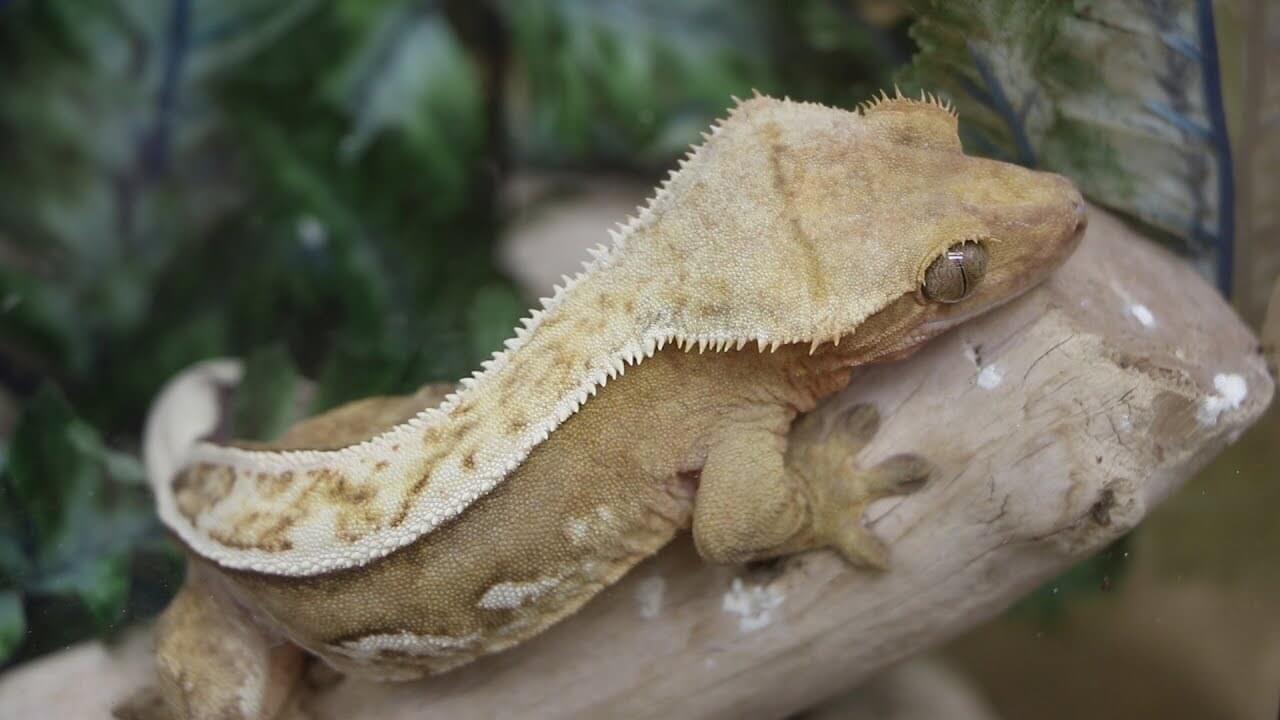
| Common Name | Crested geckos |
| Scientific Name | Rhacodactylus ciliatus |
| Adult Size | 7 to 9 inches |
| Life Expectancy | Between 10 to 20 years |
Once considered extinct, they fought and rediscovered in 1994. This pet demands low maintenance and best for beginners or children as they are very docile but timid. Just like other geckos, they can drop their tail but will not be able to regenerate it again. One must be careful while handling them as they may try to jump away and while doing this they may get injured.
Their toe pads allowed them to move effortlessly on the vertical surface and agility is added by its prehensile tail. A 20-gallon is a minimum tank requirement as they need more space to move and climb freely. It is advised to keep one male Crested geckos per tank otherwise there would be territorial fights between males. Make sure to close the tank with the screened enclosure to avoid their escape route.
Temperature
The ideal temperature at the day would be 22-26.5 C and at night it would be 18-24 C.
Food and Water
Their diet should include crickets, mealworms, silkworms, roaches, and waxworms. You can give them vitamin and calcium supplements two or three times a week. You can also provide mashed fruits like papaya, bananas, apricots, pears, mangoes, peaches, and nectarines, several times a week.
Health Problems
Some of the common health problems are rash, mouth rot, and respiratory infection. But these problems can be treated by a reptile veterinarian.
Fact: Crested geckos cannot regenerate tail just like its lizard family
4. Day Gecko
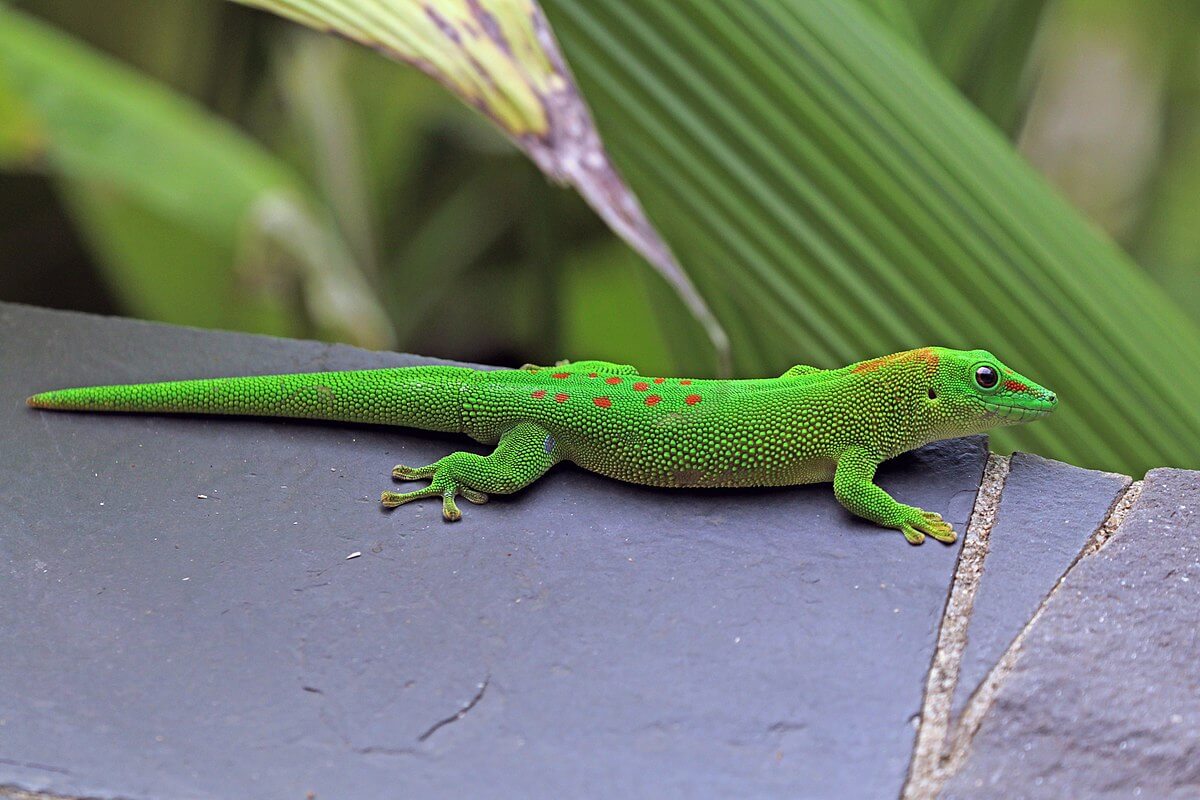
| Common Name | Day Geckos |
| Scientific Name | Phelsuma |
| Adult Size | 2.6 and 11.8 inches |
| Life Expectancy | 6-8 years in captivity & recorded life 20 years |
Day Geckos is a common name for the group of 60+ species that varies in size and color, but the most popular among them as a pet is giant day geckos. But it is not an ideal choice for the beginner as to handle them you need some experience and patience.
They are different from other geckos as they are more active during the day and excellent climbers. Sometimes you can find even the mated pairs fight and thus they needed to be housed separately. Being a good climber they need a taller tank along with the branches of snake plants or any tropical plants to climb on.
Temperature
The ideal temperature at the day would be 26 C to 32 C and at night it should be 21 C to 27 C. Humidity should range between 50 to 85 percent. Fluorescent UVA/UVB emitting reptile bulbs are needed.
Food and Water
Their diet chart includes crickets, silkworms, and other insects. You can also allow mashed fruits like mango, papaya or any other tropical fruits.
Health Problems
Their improper shedding of skin is the sign of stress and unfavorable living condition. Some of the common health problems include parasitic infection, metabolic bone disease and sometimes fatal can be the result of all these problems if not treated on time.
Fact: Unlike other members of the lizard family they are more active during the day.
Conclusion
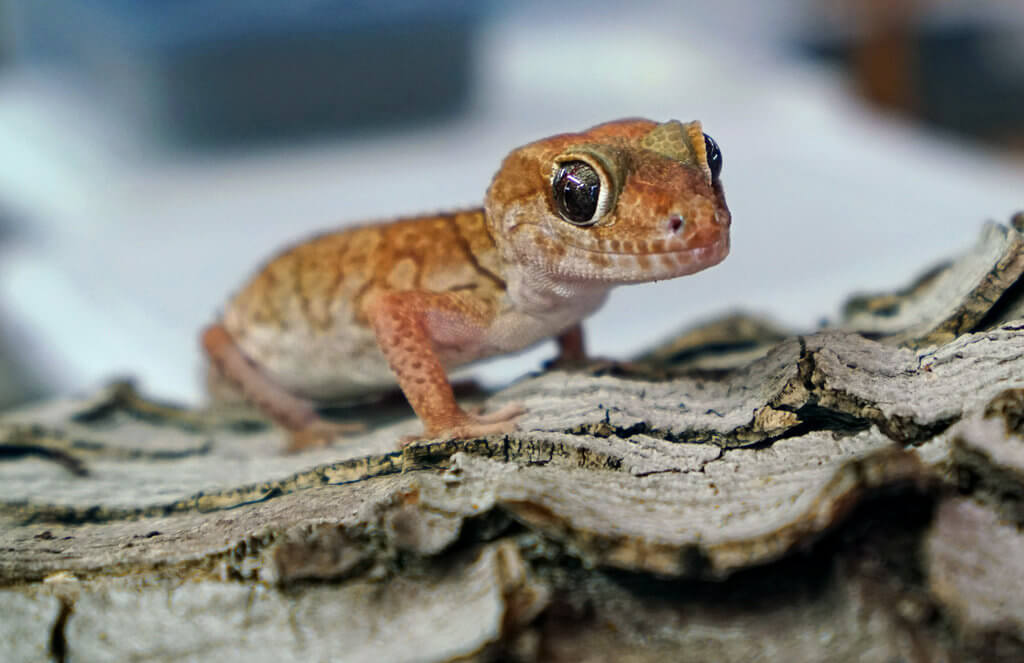
These were some of the common types of geckos you can bring home as a pet. What do you think about them? Aren’t they adorable?
Learn more :








